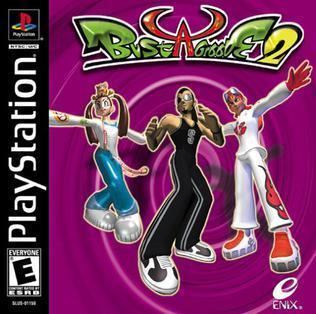7.6 /10 1 Votes
66% GameFAQs | 4.7/5 Emuparadise 66% Metacritic Initial release date 31 March 1999 | |||||||||||||||||||||||||||||||||
 | ||||||||||||||||||||||||||||||||||
Release date(s) NA: March 31, 1999JP: April 15, 1999 Similar Enix games, Music video games, Other games | ||||||||||||||||||||||||||||||||||
Bust a groove 2 jp shorty vs shorty shorty stage
Bust a Groove 2 is a hybrid music/fighting game released in 2000 for the Sony PlayStation and is the sequel to Bust a Groove. The game was originally released in Japan as Bust a Move 2: Dance Tengoku Mix (バスト ア ムーブ2 ダンス天国MIX, Basuto a Mūbu 2: Dansu Tengoku Mix), and was never released in Europe. A third game in the series, Dance Summit 2001 was only released in Japan on the PlayStation 2.
Contents
- Bust a groove 2 jp shorty vs shorty shorty stage
- Bust a groove 2 let the music take control
- Gameplay
- Fever Time
- Characters
- Songs
- Changes
- Reception and value
- References
The game takes place one year after the previous installment and shares the same overall gameplay. It combines dance moves and special abilities designed to damage the opponent. It also features new songs, new characters and updated costumes for the returning characters retained from the previous game.
Bust a groove 2 let the music take control
Gameplay
Bust a Groove 2''s gameplay is still the same from the previous title. However, backgrounds have become crazier; if a player attains high scores, background stages will sport crazy effects and changes (see Fever Time).
"The single-player game has changed - it now features branching paths in the single-player game that move you up to more difficult opponents depending on how well you're dancing. The popularity meter has been axed; now your character has a small border around his or her name that changes in color depending on how well you're dancing. Also, a new meter sits in the middle of the screen that tracks every "Cool, Chillin', and Freeze" event and moves up accordingly. When all three bars are filled to capacity, your points are doubled for every dance move made during that time. In Bust a Groove 2 there is a standard two-player versus mode, a practice mode to help you get accustomed to timing the fourth beat, and a dance-view mode that allows you to cycle through each dancer's individual moves and string them together to make your own dances."
The game also included 2 new commands aside the somersault and "Jammer" (attack) moves. This time, the player could now do a 'reflect move' and guard attacks.
Fever Time
If a player obtains a high score by completing a stage with very few mistakes or missed actions, a special dance solo starring the winner of the round takes place immediately after the round ends. This is known as Fever Time.
In some cases, both the winner and loser may dance together during a special Fever Time. This occurs if both players were able to finish the stage with close high scores.
Characters
The initial characters Heat, Hiro, Kelly, Kitty-N, Shorty,Strike and Capoeira were retained from the original Bust a Groove and removed several of the original game's characters which includes Pinky, Hamm, Frida, Gas-O and the secret character Burger Dog (but makes a cameo in Comet's stage). These were replaced by several new characters: Comet, Bi-O, and Tsutomu.
Some new hidden characters were also introduced into the game, and could be unlocked after completing certain tasks. Pander (also a new addition to the cast) and Robo-Z Gold are the only hidden characters that have a unique dance style, other hidden characters merely mimicked other characters' dance moves.
Songs
Some of the songs which were featured in the game were originally in Japanese language and was translated to English for the U.S. release such as: Magic Tower, Moon Light Party, Hello! Kitty-N and Hizashi no oku no Happy Heart. Unlike the game's predecessor, there is no English OST released.
Changes
The following are several in-game changes made with the English version of the game. Most noticeable is the change of Hiro's symbol due to the age rating concerns.
Reception and value
Bust a Groove 2, along with its predecessor, is one of the more valuable PlayStation games on the secondary market. For example, complete, used copies sell for more than $80 which is more than the original MSRP of $35.99.
